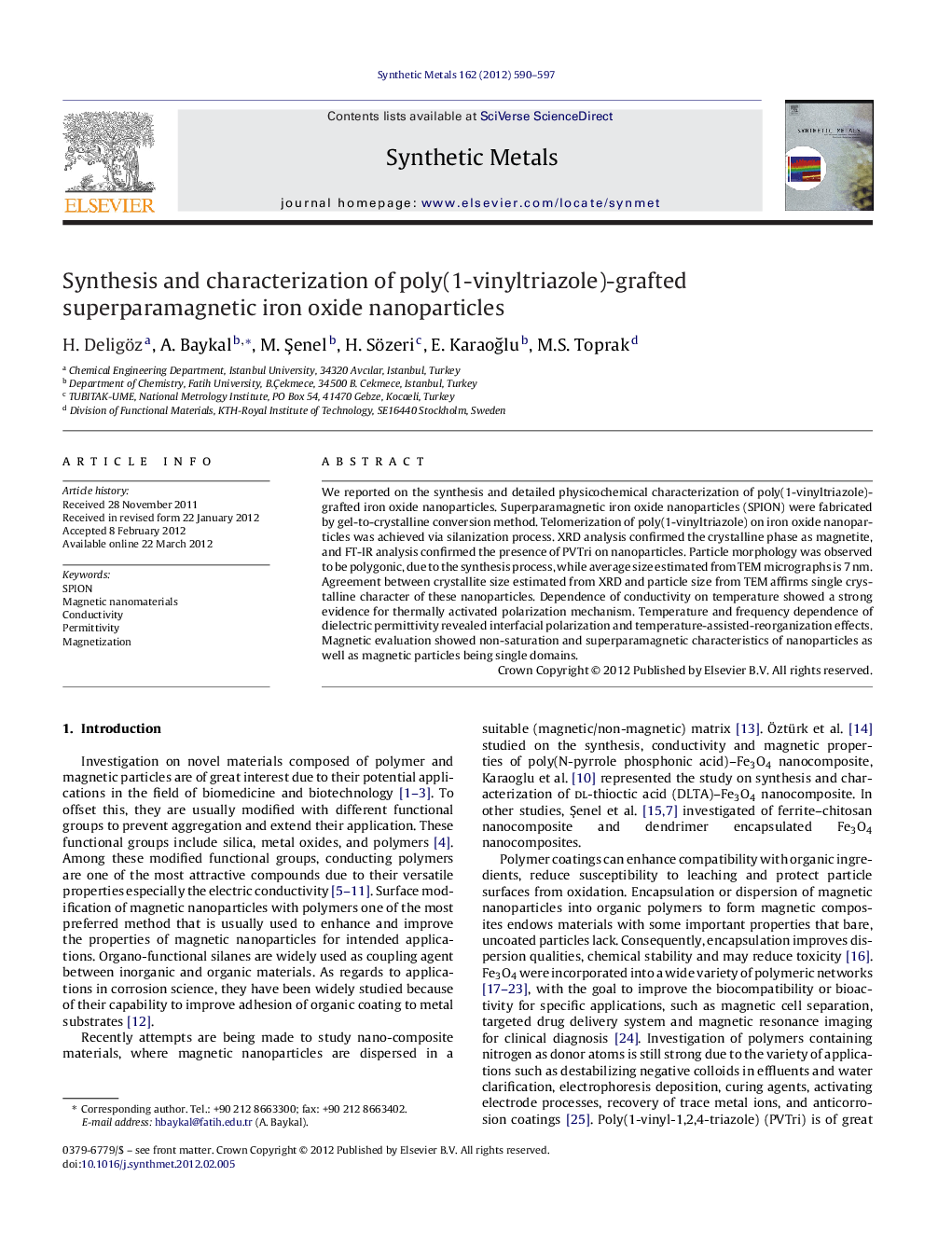| Article ID | Journal | Published Year | Pages | File Type |
|---|---|---|---|---|
| 1441913 | Synthetic Metals | 2012 | 8 Pages |
We reported on the synthesis and detailed physicochemical characterization of poly(1-vinyltriazole)-grafted iron oxide nanoparticles. Superparamagnetic iron oxide nanoparticles (SPION) were fabricated by gel-to-crystalline conversion method. Telomerization of poly(1-vinyltriazole) on iron oxide nanoparticles was achieved via silanization process. XRD analysis confirmed the crystalline phase as magnetite, and FT-IR analysis confirmed the presence of PVTri on nanoparticles. Particle morphology was observed to be polygonic, due to the synthesis process, while average size estimated from TEM micrographs is 7 nm. Agreement between crystallite size estimated from XRD and particle size from TEM affirms single crystalline character of these nanoparticles. Dependence of conductivity on temperature showed a strong evidence for thermally activated polarization mechanism. Temperature and frequency dependence of dielectric permittivity revealed interfacial polarization and temperature-assisted-reorganization effects. Magnetic evaluation showed non-saturation and superparamagnetic characteristics of nanoparticles as well as magnetic particles being single domains.
Graphical abstractSynthesis scheme of poly(1-vinyltriazole)-grafted SPION.Figure optionsDownload full-size imageDownload as PowerPoint slideHighlights► Superparamagnetic iron oxide nanoparticles (SPION) were fabricated by gel-to-crystalline conversion method. ► Telomerization of poly(1-vinyltriazole) on iron oxide nanoparticles was achieved via silanization process. ► Silica was coated on Fe3O4 nanoparticles to avoid the aggregation of the particles.
